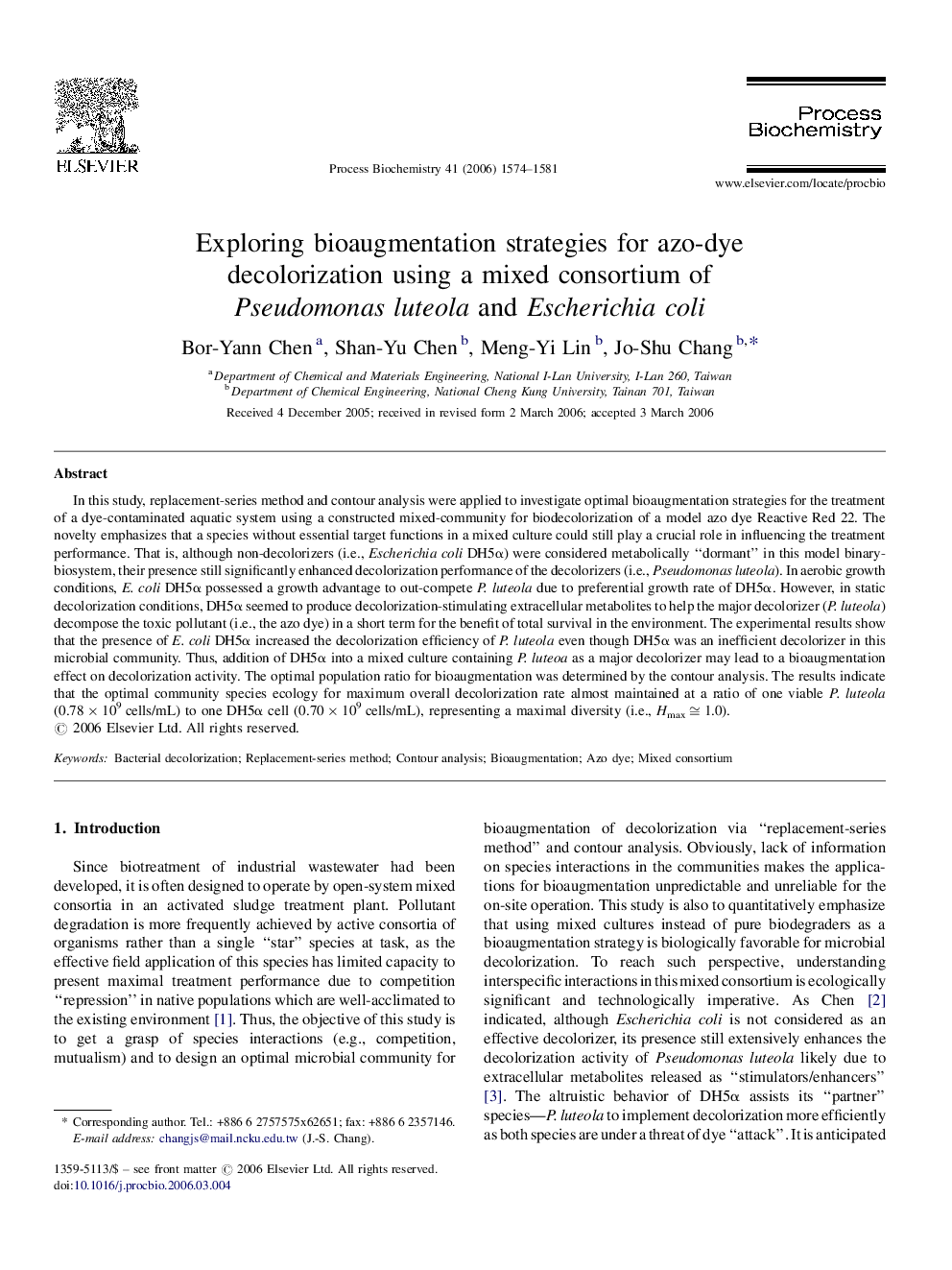| کد مقاله | کد نشریه | سال انتشار | مقاله انگلیسی | نسخه تمام متن |
|---|---|---|---|---|
| 36418 | 45132 | 2006 | 8 صفحه PDF | دانلود رایگان |

In this study, replacement-series method and contour analysis were applied to investigate optimal bioaugmentation strategies for the treatment of a dye-contaminated aquatic system using a constructed mixed-community for biodecolorization of a model azo dye Reactive Red 22. The novelty emphasizes that a species without essential target functions in a mixed culture could still play a crucial role in influencing the treatment performance. That is, although non-decolorizers (i.e., Escherichia coli DH5α) were considered metabolically “dormant” in this model binary-biosystem, their presence still significantly enhanced decolorization performance of the decolorizers (i.e., Pseudomonas luteola). In aerobic growth conditions, E. coli DH5α possessed a growth advantage to out-compete P. luteola due to preferential growth rate of DH5α. However, in static decolorization conditions, DH5α seemed to produce decolorization-stimulating extracellular metabolites to help the major decolorizer (P. luteola) decompose the toxic pollutant (i.e., the azo dye) in a short term for the benefit of total survival in the environment. The experimental results show that the presence of E. coli DH5α increased the decolorization efficiency of P. luteola even though DH5α was an inefficient decolorizer in this microbial community. Thus, addition of DH5α into a mixed culture containing P. luteoa as a major decolorizer may lead to a bioaugmentation effect on decolorization activity. The optimal population ratio for bioaugmentation was determined by the contour analysis. The results indicate that the optimal community species ecology for maximum overall decolorization rate almost maintained at a ratio of one viable P. luteola (0.78 × 109 cells/mL) to one DH5α cell (0.70 × 109 cells/mL), representing a maximal diversity (i.e., Hmax ≅ 1.0).
Journal: Process Biochemistry - Volume 41, Issue 7, July 2006, Pages 1574–1581